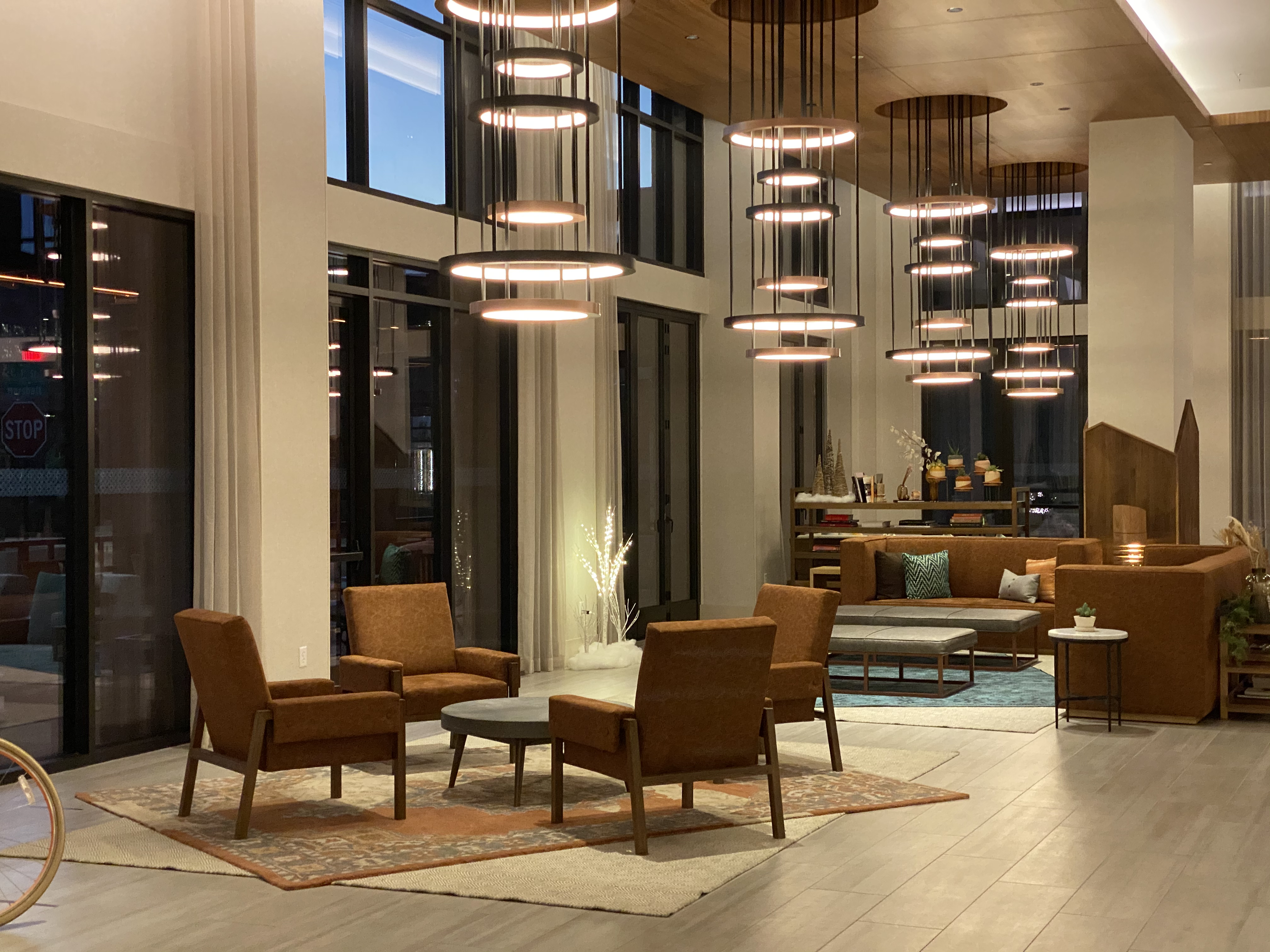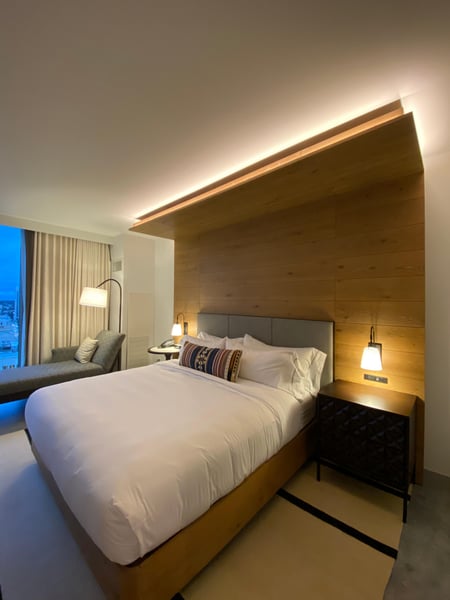Creating a Hospitality Space That Rocks with Lighting Design
When it comes to hospitality spaces, the customer experience is everything.
Creating a warm and inviting atmosphere is crucial to ensuring the comfort and satisfaction of guests. Many aspects contribute to the overall vibe of a space, but none more than proper lighting design. You can see the difference when visiting 2-star and 3-star hotels that don’t have a lighting designer. 4-star and above hotels usually have a lighting designer, and it shows.
From assisting in wayfinding to affecting guests’ moods, lighting design plays an important part in the overall customer experience. Professional lighting designers are artists who possess the expertise to transform hospitality spaces and really make them sing while working within budget constraints.
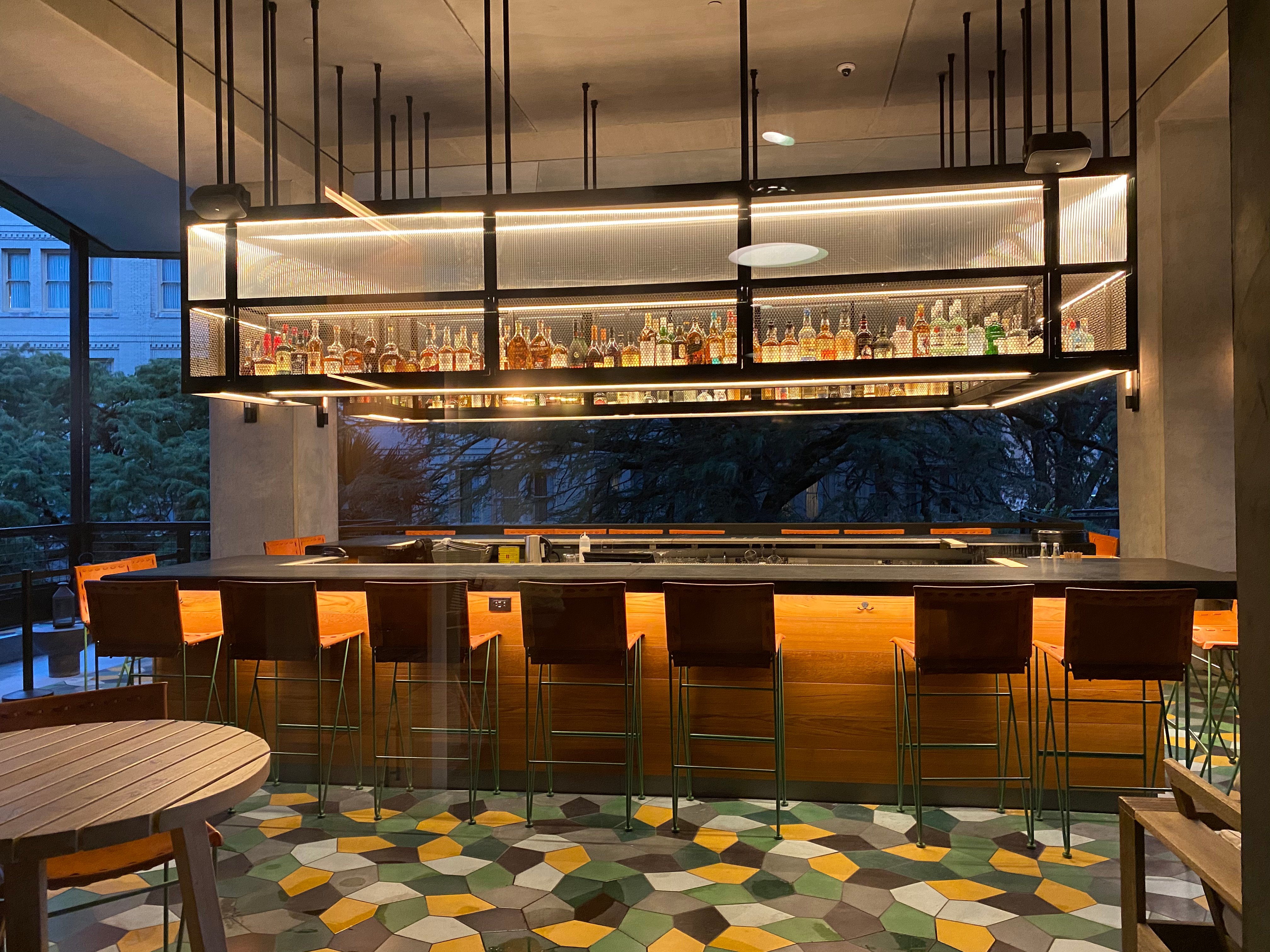
Setting the Mood
Lighting has a profound impact on human psychology and mood, influencing our emotions, behaviors, and even our perception of time. Color temperature, for instance, plays a significant role in shaping our experiences. Cooler temperatures, like blue or white light, promote alertness and concentration, making them ideal for areas where guests need to be attentive, such as conference rooms or workspaces. Warmer temperatures, on the other hand, such as yellow or orange light, create a cozy and relaxing atmosphere, perfect for lounges, restaurants, and guest rooms.
In addition to color temperature, the intensity of light also affects our mood. Bright light enhances alertness and energy levels, while dimmer light induces a sense of calm and relaxation. By carefully considering these factors, lighting designers can create atmospheres that align with the desired ambiance of different spaces within a hospitality establishment.
Beyond affecting our moods, lighting also plays a crucial role in regulating sleep patterns and circadian rhythms. This is especially important in hotels. Exposure to bright blue light in the morning helps synchronize the sleep-wake cycle, while warm and dim light in the evening signals to the body that it's time to wind down and prepare for rest. Thoughtful lighting design in guest rooms and common areas can contribute to better sleep quality and overall well-being for guests.
Lighting the Way
Beyond its psychological impact, lighting serves practical functions within hospitality spaces. Lighting design can not only direct the eye to showcase architectural features, highlight artwork, or accentuate decorative elements, it can also assist in wayfinding.
By skillfully playing with focal points and manipulating the intensity of brightness, lighting designers have the power to highlight and emphasize specific areas within the space. This gives guests a clear, yet subtle, indication of where they need to go first then, where to go next by defining the visual hierarchy of elements.
Lighting artwork requires careful consideration of factors such as ceiling height and the significance of the artwork itself. Properly illuminated art not only enhances the aesthetic appeal of a space, but it also communicates a sense of value and sophistication.
Furthermore, lighting design is essential for ensuring the safety and comfort of guests. Adequate lighting in hallways, stairwells, and outdoor areas significantly reduces the risk of accidents and helps guests navigate through the premises with ease. Illuminating these areas enhances the overall guest experience while also instilling a sense of security and peace of mind.
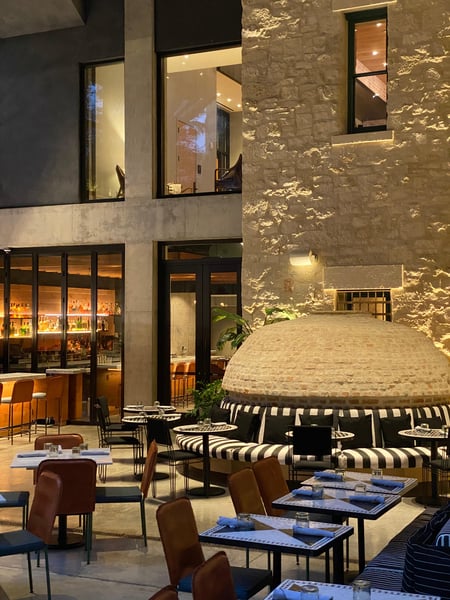
Things to Consider
While each project is different and every environment unique, the following aspects need to be considered for all hospitality spaces:
- Color Temperature: The color temperature in functional area affects everything from a person’s alertness to their perception of value.
- Multiple Lighting Techniques: It takes at least 3-4 lighting techniques in each room to create visual interest and elicit an emotional response.
- Layering: Spaces will include a mix of downlighting, feature lighting, art lighting, architecture lighting and decorative lighting. Proper layering is crucial to creating the proper mood.
- Length of Investment: How long the developer will own or operate the property could have a tremendous impact on budgeting and fixture selection.
- Brand Consistency: The level of tailoring the brand executes at other properties should be considered.
- Neighboring Properties: Lighting can be used to gain patrons over neighboring competition.
- Control Strategies: The right strategies can attain the vision for the ambiance while lowering cost.
- Style Enhancement: From relaxed to fun to funky to formal, lighting can support the other trades to enhance that objective.
- Budget: In many cases, lighting designers can give the project more for less cost.
The Importance of Hiring a Lighting Designer
Learn more about what you can expect from working with a professional lighting designer with this step-by-step infographic.
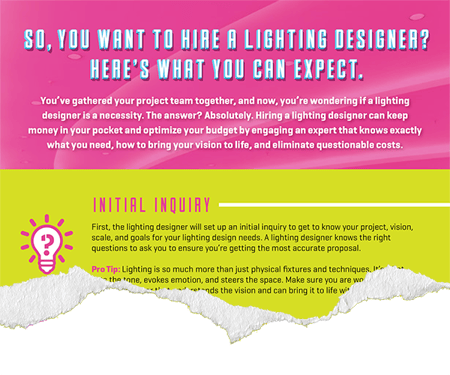
While some may be tempted to cut corners and entrust lighting design to individuals without specialized expertise, the value of a professional lighting designer cannot be overstated. A lighting designer is a professional artist whose talents go beyond planning and installation; these rock stars possess a deep understanding of the interplay between light and space and how to bring a vision to life in a cohesive and impactful manner with balance and focus and style.
By hiring a lighting designer, hospitality businesses can benefit from their comprehensive knowledge of lighting fixtures, technologies, and design principles. They can effectively collaborate with architects, interior designers, and other professionals involved in the project to ensure that the lighting design seamlessly integrates with the overall vision.
Perhaps most importantly, lighting designers help businesses maximize their budgets by providing cost-effective solutions without compromising on quality or visual impact. They have access to a wide range of lighting options, including energy-efficient LED fixtures, which not only reduce operational costs but also contribute to sustainability efforts, thereby minimizing the environmental footprint of the establishment. Most cost reduction measures can happen without suffering a degradation of the visual environment. While some measures will cause the visual to suffer, longevity is usually the prime casualty when the contractor/rep driven value engineering process dominates. Value Engineering should be done before contract is awarded and executed by the lighting designer to ensure quality and make sure that the mix of longevity and price fit the overall objectives of the property owner or developer.
When it comes to hospitality, the power of professional lighting design should never be underestimated. It can shape the atmosphere, influence guest experiences, and elevate the overall impression of a space at the right price and with the appropriate life cycle costs.
Do you have a vision for your next project? Let us help you bring it to life.
